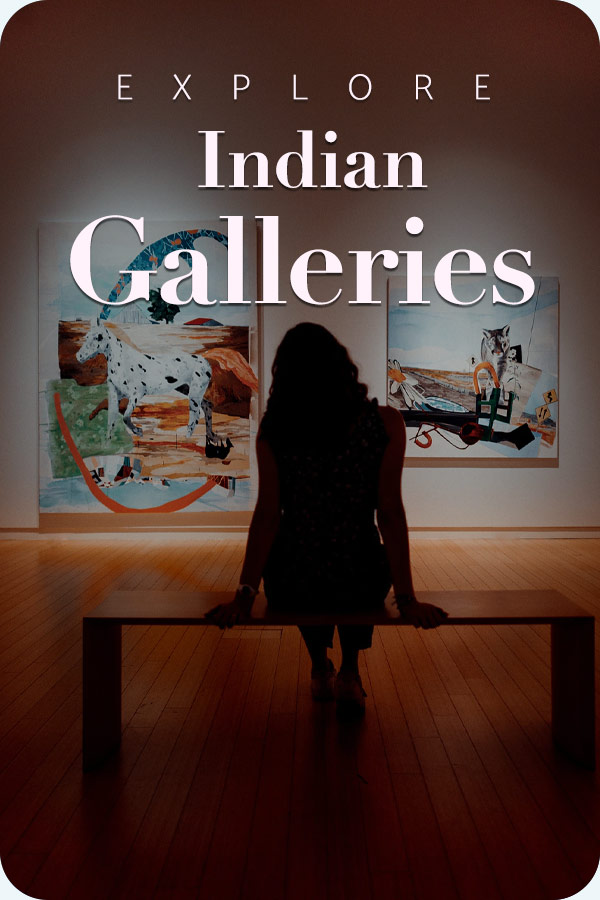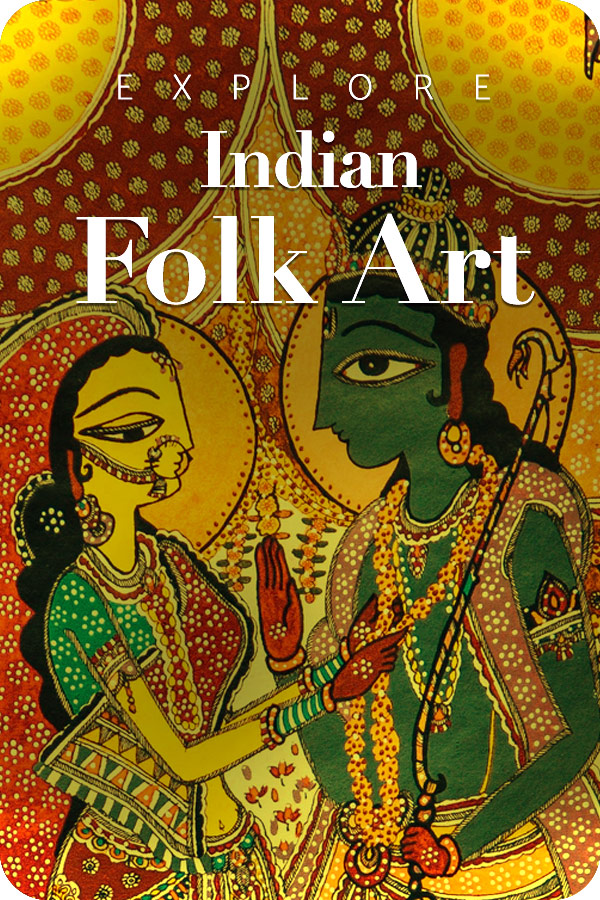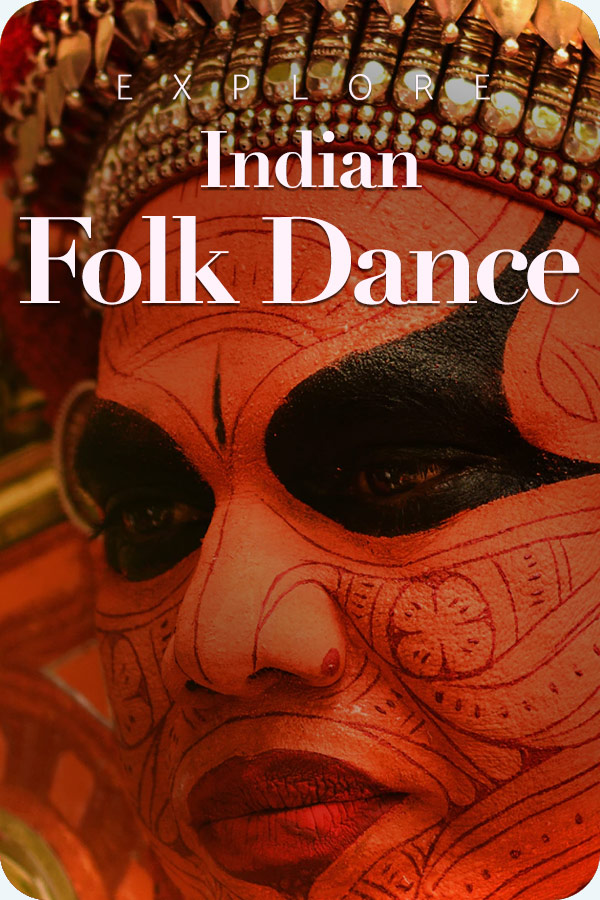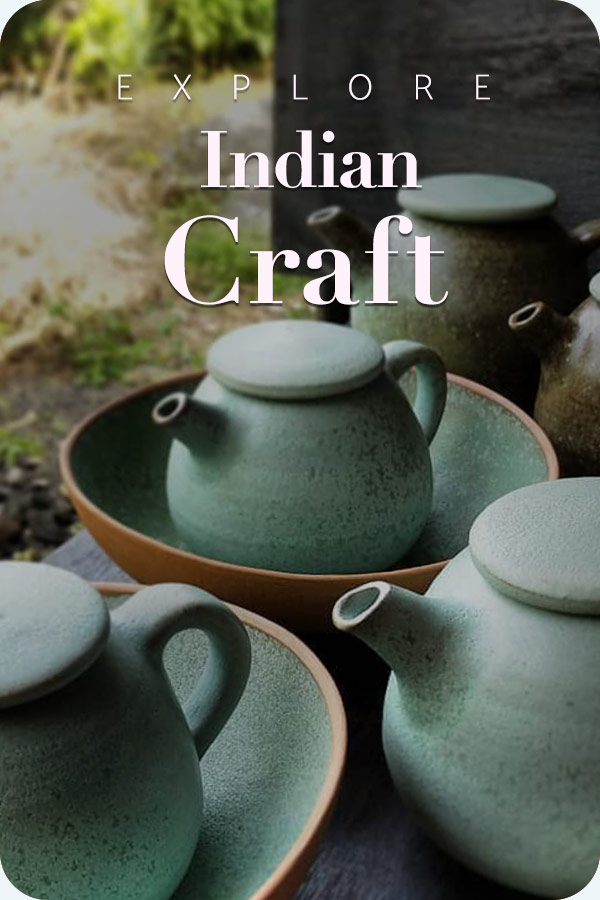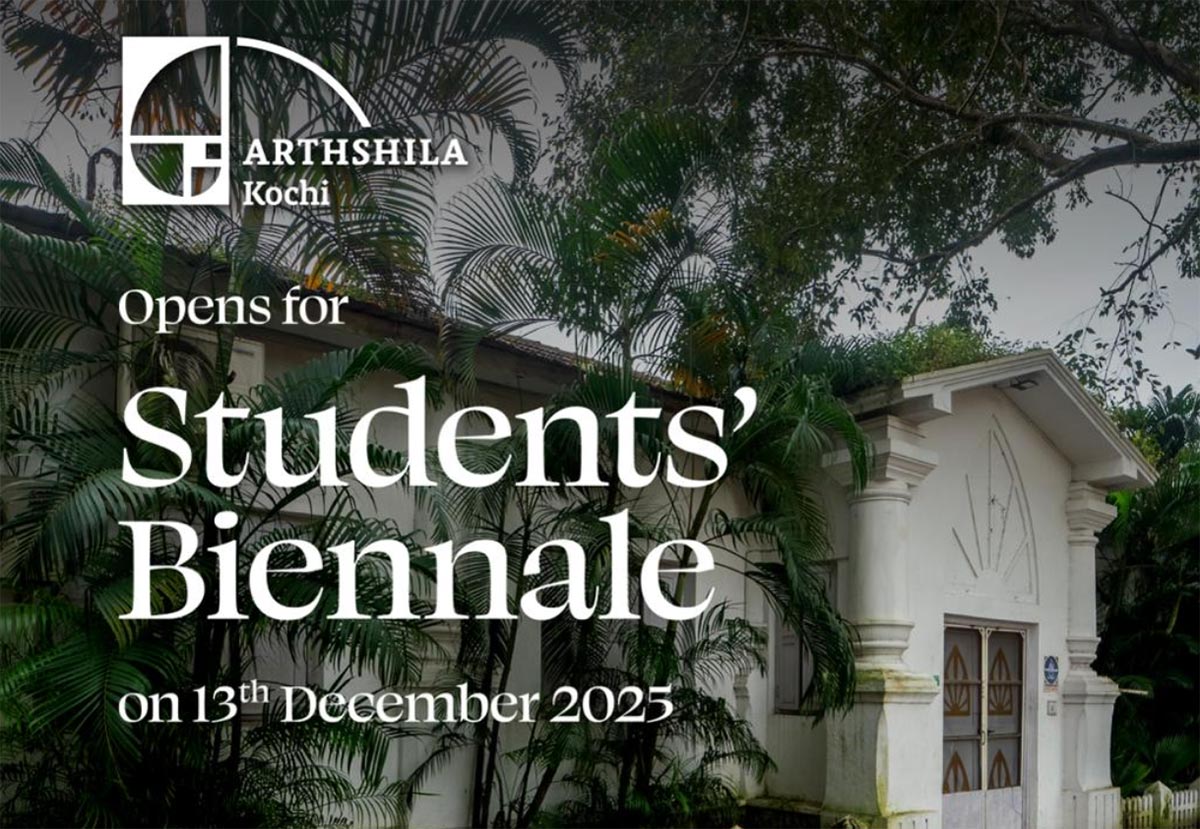
A Heritage Space Reimagined for the Students’ Biennale
Artshila Kochi has announced the opening of one of the five official venues of the 6th Kochi-Muziris Biennale (KMB) as the hosting site for the upcoming Students’ Biennale. This is a key educational segment that marks a significant moment in the build-up to the 2025–26 edition. Located along Parade Road near Fort Kochi’s historic Parade Ground, Arthshila’s heritage structure will open its doors on 13 December 2025, presenting a dedicated space for student-led contemporary art practices.
In recent years, the students’ Biennale has emerged as one of the most zestful platforms for young artists across India. As a scholastic extension of the KMB, it fabricates fresh infrastructural and intellectual spaces where student practitioners can get involved with contemporary artistic endeavors. With Arthsila Kochi joining it, the grounds turned more decentralized, and a nexus of a student-based ecosystem is aptly positioned.
The KMB
The KMB stands tall as a one-of-a-kind contemporary art exhibition in South Asia, transforming the historic port city of Kochi into a composite cultural laboratory, brewing artistic brilliance. It is organized once every two years, hence, a biennale. While the dates of the inauguration are approaching, the art scene in India is buzzing with excitement to witness the next generation of South Asian artistic geniuses. The main exhibition of the 6th KMB, titled “For The Time Being,” is curated by internationally acclaimed performance artist Nikhil Chopra in collaboration with HH Art Spaces, Goa. This edition, which is scheduled to run for 110 days from December 12, 2025, to March 31, 2026, aims to challenge the conventional perceptions of viewing art. Nikhil reimagines the artistic landscape as a “living ecosystem” where all the elements share space, time, and resources.
The curation of KMB is very methodological, and the exhibition is expected to feature a high number of durational works and performances. The audience will be engrossed in participatory moments that will omit the distinction between creation and presentation. The Biennale seeks to bridge emerging global perspectives with a strong rootedness in the local context. The philosophy of the event is to continue the legacy of cultural exchange, pointing to Kochi’s history as an ancient port, Muziris, where distant civilizations once confided. Major venues like Aspinwall House, Pepper House, and Durbar Hall will house the primary exhibition.
Artshila Kochi- The Students’ Biennale
The Students’ Biennale, initiated in 2014, was conceived as a response to gaps in India’s formal art education system. The inclusion of Artshila Kochi as one of the five venues, dedicating it to the Students’ Biennale, is a significant step. The Students’ Biennale itself is a key educational and outreach vertical of the Kochi Biennale Foundation, dedicated to providing a prestigious platform for students from Indian art schools and universities. Thus, by deliberately placing this spot for the students, they have carved a space to feature more works created by the students that are worthy of displaying. By showcasing works from these young artists, the SB actively participates in shaping the future discourse of contemporary art in South Asia. Artshila Kochi will become a space where this new generation can engage with the KMB’s core themes, such as liveness, temporality, and embodied history, on their own terms.
View this post on Instagram
Artshila Kochi is also significant because it is a carefully revitalised heritage structure that sits amidst the lush landscape of Parade Road. The white façade of the building, its colonial-era architectural imprint, and the surrounding greenery create a unique atmosphere where the past and present intersect. Historically, Fort Kochi has been shaped by Portuguese, Dutch, and British influences, and Arthshila’s architecture subtly echoes this syncretic past. Moreover, Artshila is already known for its cultural work in Patna, Santiniketan, and Ahmedabad, thus creating a more sensible environment around art. The transition of this historical place into a domain of new artistic practice ensures that the KMB functions not only as an art display but as an incubator of thought.
The upcoming Students’ Biennale will highlight themes such as material ecologies, migration, digital identities, and climate anxieties, issues that resonate deeply with emerging artists across the subcontinent. Arthshila Kochi’s spatial configuration is expected to support installations, new media artworks, documentary projects, and site-responsive works.
Event Details
| Important Points | Details |
|---|---|
| Biennale Title | “For The Time Being” |
| Curator(s) | Nikhil Chopra with HH Art Spaces, Goa |
| Main Exhibition Dates | December 12, 2025 – March 31, 2026 (110 Days) |
| Students’ Biennale Dates | December 13, 2025 – March 31, 2026 |
| New SB Venue | Artshila Kochi, Parade Road, Fort Kochi |
| Curatorial Focus | The Body, Process as Methodology, Friendship Economies, Liveness, and Presence |
| Founders | Bose Krishnamachari and Riyas Komu (2012) |
| Key Venues | Aspinwall House, Pepper House, David Hall, Durbar Hall, and Artshila Kochi (for SB) |
Key Highlights
- A heritage venue transformed into a contemporary art space.
- One of the five official venues for the Students’ Biennale 2025–26.
- The exhibition will run from December 13, 2025, to March 31, 2026.
- Strengthens Arthshila’s nationwide network of cultural spaces.
- Enhances the pedagogical ecosystem of the Kochi-Muziris Biennale.
- Expected to feature diverse works by student artists from across India.
Takeaway
Arthshila’s inclusion as a Biennale venue represents more than a logistical expansion; it is a reflection of the kind of cultural future we want to build. India’s art education often lacks an institutionalized platform for sustained experimentation, and the Students’ Biennale has emerged as a corrective to that lack. It suggests that the future of Indian art will grow not in isolation, but through conversations with place, memory, and lived experience. This alignment signals a future where India’s artscape becomes more democratic, critically engaged, and locally rooted. It sets a standard that other cultural bodies should follow. It promotes the ideas of investing in young voices, to value their inquiries, and offer a stage to them to showcase their work to a larger crowd. If this is truly fulfilled, only then can contemporary art in India evolve beyond just viewing and metamorphose into something meaningful. Therefore, this edition understands that to secure art’s future, one must empower its creators to confront the contradictions of the present.



